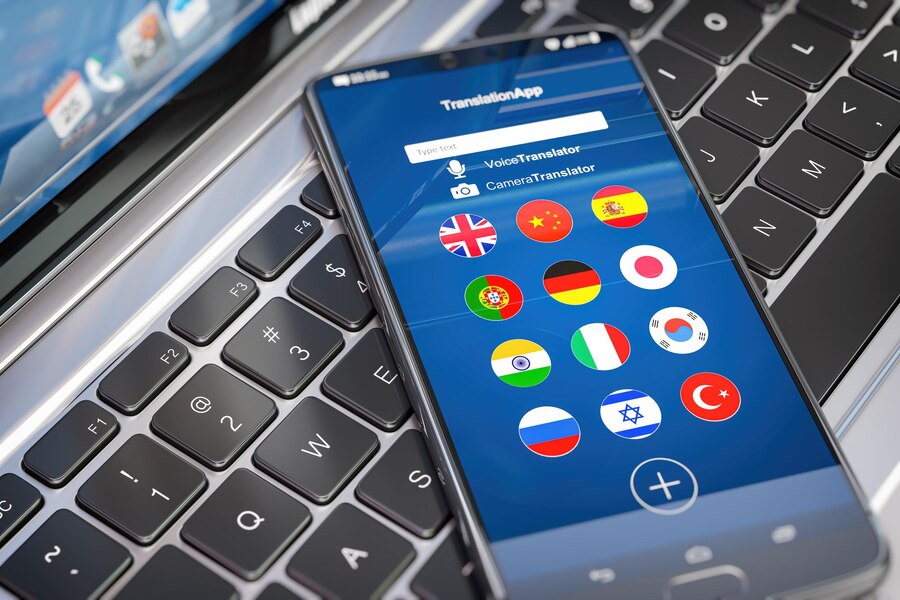In the age of digital transformation, language learning apps have become essential tools for those looking to acquire new languages. Apps like LiveXP have revolutionized the way people learn by offering accessible, interactive, and personalized language education. If you’re looking to develop a language learning app like LiveXP, this comprehensive guide will walk you through the process.
1. Understanding the Language Learning Market
Before diving into the technical aspects of building an app, it’s crucial to understand the language learning market. The demand for language education is booming, driven by globalization, the rise of international careers, and personal development goals. Language apps cater to a diverse audience, from students and professionals to travelers.
Key Stats:
- The language learning market is projected to reach $28.5 billion by 2025.
- Over 1.5 billion people are actively learning new languages globally.
- Popular languages include English, Spanish, Chinese, French, and German.
This huge potential makes building a language learning app a profitable venture.
2. Features of a Successful Language Learning App
When you build a language learning app like LiveXP, it’s essential to incorporate features that enhance the user’s experience and ensure effective learning. Below are the must-have features:
2.1 Interactive Lessons
Providing engaging and interactive lessons is key. Quizzes, exercises, and real-time feedback help users stay motivated and track progress. Incorporating multimedia elements like images, audio, and video enhances learning.
2.2 Live Tutoring
Apps like LiveXP offer live tutoring sessions, where learners can interact with professional language teachers in real-time. This feature bridges the gap between traditional classroom learning and digital education.
2.3 Gamification
Gamification adds a fun and competitive edge to learning. Features like badges, leaderboards, and streaks encourage users to consistently practice and improve their language skills.
2.4 Personalized Learning Paths
A personalized learning path adapts to the user’s skill level and learning speed. Offering AI-powered customization helps provide lessons and challenges tailored to individual goals.
2.5 Multi-language Support
Supporting multiple languages expands your app’s user base. Ensuring your app caters to learners of different languages will make it more versatile and attractive.
2.6 Offline Mode
Many users want to learn on the go, even without internet access. An offline mode allows learners to download lessons and continue studying without a connection.
2.7 Social Learning
Building a community aspect through social sharing and discussion forums can boost engagement. Learners can practice together, share achievements, and motivate each other.
2.8 Progress Tracking
Providing a clear and visual representation of users’ progress encourages ongoing learning. Dashboards, progress bars, and goal-setting features are effective in motivating users.
3. Choosing the Right Technology Stack
The technology stack for a language learning app like LiveXP plays a critical role in its functionality, performance, and scalability. Here’s a breakdown of essential components:
3.1 Frontend Development
The frontend should be intuitive, user-friendly, and responsive. Consider using technologies like:
- React Native for cross-platform app development.
- Flutter for high performance and seamless UI/UX.
- HTML5, CSS, and JavaScript for web-based platforms.
3.2 Backend Development
The backend is the backbone of your app, managing data, user authentication, and content delivery. Key technologies include:
- Node.js for fast, scalable backend solutions.
- Ruby on Rails for efficient database management.
- Python/Django for its simplicity and rapid development capabilities.
3.3 Database
For storing user data, lesson content, and progress tracking, you’ll need a robust database solution such as:
- MySQL or PostgreSQL for relational databases.
- MongoDB for NoSQL databases, especially if you expect unstructured data.
3.4 Cloud Hosting and Storage
Consider cloud-based services to ensure scalability and high performance. Providers like Amazon Web Services (AWS) or Google Cloud offer storage and server solutions tailored to app developers.
4. Language Recognition and AI
Incorporating Artificial Intelligence (AI) can make your language learning app stand out. Features like speech recognition, automated assessments, and AI-driven personalized content significantly improve the user experience. AI can analyze users’ language proficiency and provide feedback on pronunciation, grammar, and vocabulary usage.
For language recognition and translation, consider integrating Google Cloud Speech-to-Text API or Microsoft Azure Cognitive Services.
5. User Experience (UX) and User Interface (UI) Design
The UX and UI design are crucial for retaining users and ensuring they enjoy the learning process. Here’s how you can make the design more user-centric:
5.1 Simple Onboarding Process
New users should find it easy to sign up and navigate through the app. A simple and quick onboarding process that explains the app’s key features is essential.
5.2 Visual Appeal
Use bright colors, icons, and illustrations to make the app visually engaging. The user interface should be clean and clutter-free, allowing learners to focus on their lessons.
5.3 Accessibility
Ensure that the app is accessible to people with different needs by incorporating features like text-to-speech, closed captions, and adjustable font sizes.
6. Monetization Strategies
Monetizing your app is essential for long-term success. Below are some of the most common monetization models for language learning apps:
6.1 Freemium Model
Offer basic features for free while charging for premium features like live tutoring, advanced lessons, or offline access.
6.2 Subscription Model
Charge users a monthly or yearly fee to access exclusive content, personalized lessons, or one-on-one tutor sessions.
6.3 In-App Purchases
Allow users to buy additional learning materials, lesson packs, or access to specific features like speech recognition and feedback.
6.4 Ads and Sponsorships
Integrating ads can be a secondary revenue stream. However, ensure that ads are non-intrusive to avoid disrupting the learning experience.
7. Marketing Your Language Learning App
Once the app is built, marketing is key to reaching your target audience. Here are some effective strategies to promote your language learning app:
7.1 Search Engine Optimization (SEO)
Optimize your app store listing and website for relevant keywords like “language learning app”, “learn Spanish”, or “live tutoring for languages” to increase visibility.
7.2 Influencer Marketing
Collaborate with influencers or language enthusiasts on platforms like YouTube, Instagram, or TikTok to showcase the app’s features and benefits.
7.3 Social Media Campaigns
Leverage Facebook, Twitter, and Instagram to engage potential users, run contests, and share success stories from existing learners.
7.4 Paid Ads
Invest in Google Ads or Facebook Ads to reach a targeted audience based on their demographics and language-learning interests.
8. Testing and Iterating
Before launching your app, extensive testing is crucial to ensure that everything runs smoothly. Perform beta testing with real users to gather feedback on functionality, UX/UI, and performance. Continue to iterate and improve the app based on user feedback and analytics data.
9. Launching Your Language Learning App
Once the app is fully developed and tested, it’s time to launch. Ensure you have a well-executed launch plan, including an app store listing, a dedicated website, and social media promotion. Post-launch, continue to monitor user feedback and release updates to fix bugs or add new features.
10. Post-launch Support and Updates
Providing continuous support after launch is key to retaining users. Offer customer support, regularly release new lessons, and introduce features based on user demands. Engaging with your community through social media and app notifications also helps retain your audience.
Conclusion
Building a language learning app like LiveXP requires a combination of careful planning, the right features, and a robust technology stack. With the growing demand for language education, creating a well-designed, feature-rich app has the potential to attract a broad user base. By focusing on interactive learning, personalized paths, live tutoring, and user engagement through gamification and community features, your app can stand out in a competitive market.
Take the time to understand your users’ needs, integrate the latest technologies, and continuously improve based on feedback to ensure long-term success.
Also Read: Build a Rental Website for Canada



